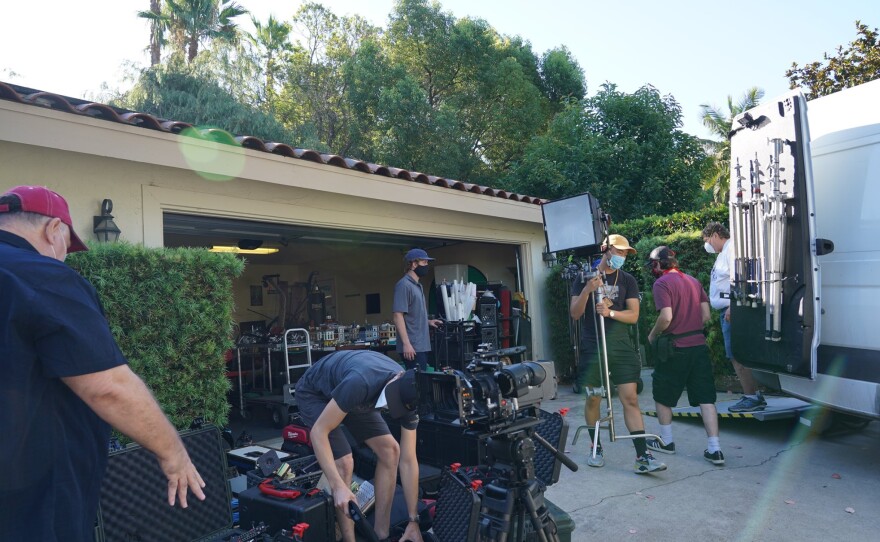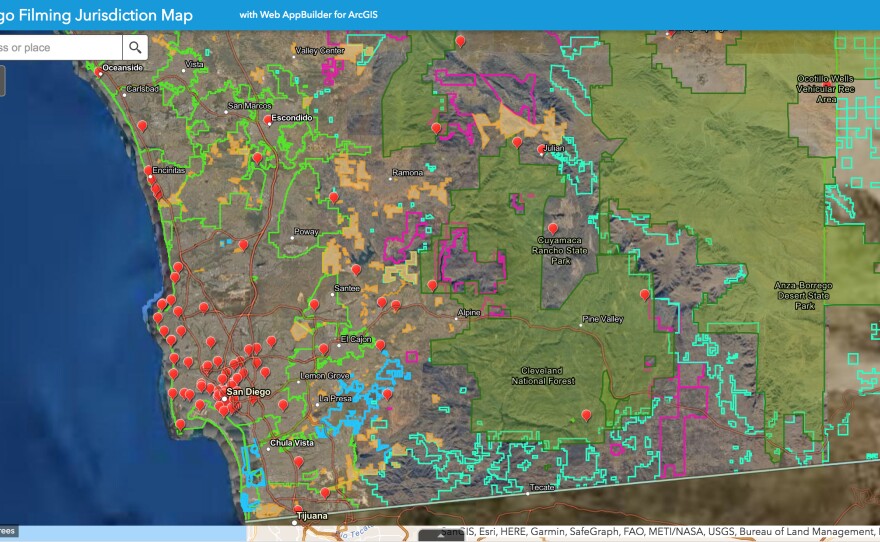COVID-19 shut down the film industry but now the City of San Diego's film office is back open with new guidelines for working in the pandemic and with new tools for anyone who wants to shoot here.
San Diego used to have a film commission. Back in 1976, then-mayor Pete Wilson established it to help bring more film production to San Diego. But it was essentially gutted and laid to rest in 2012.
Now San Diego has a film office that was created in 2016 and offers a comprehensive suite of services including a filming production guide, location gallery and interactive map.
"The original San Diego Film Commission was one of the oldest established film commissions in the country," Brandy Shimabukuro, filming program manager for the city of San Diego’s Special Events & Filming Department, said. "It started off as part of the chamber of commerce, and then it spun off as an independent organization and really brought in an enormous amount of filming to the region in partnership with Stu Segall Productions and established soundstage in Kearny, Mesa. A lot of things led to its dissolution, but from 2012 onward, the city of San Diego, what was then called the Office of Special Events, took on kind of the core functions of at least permitting the permitting aspects of what the old film commission would do. And then Mayor Faulconer and city council in 2015 advocated for the re-emergence of the San Diego film office. Part of that was the creation of my role, the filming program manager within what ultimately became the special events and filming department within the city of San Diego. The intent had been to bring back the core functions and to truly market and promote San Diego as a filming destination."

Shimabukuro faced unexpected challenges this year as COVID-19 shut down businesses including the film industry. But in June, the Film Office was ready to reopen with new guidelines for shooting in San Diego.
"Production does look different these days," Shimabukuro said. "We are only allowing right now smaller productions of cast and crew counts of fifteen or less. While we have been hearing from larger productions that are interested in filming later in the year, the bulk of what we have been seeing filming on location in San Diego has been smaller commercial shoots, documentaries, docu-series, small reality shoots of filming that's a lot more low impact. And what production ultimately looks like is you're taking an industry that thrives on close contact and in-person meetups, because you're filming on location, typically cast and crew counts would be far, far larger than your typical threshold of fifteen. So a lot of productions are utilizing what's called zones where there's minimal mixing. People are actively doing health monitoring every single day. That is a requirement that we are doing physical distancing, of course, is required. Masks for people who are on location is also a requirement, with the exception being for talent who are actively being filmed in front of the camera. We've seen that the film industry across the board can be extremely flexible. And they have really risen to the challenge of how to come back to work and do it safely."

In addition to dealing with the challenges of the pandemic, Shimabukuro has also been working on tools that will help filmmakers find locations in San Diego and have access to information on permitting to shoot on various private and government-owned properties.
"I do need to acknowledge the incredible work from the city's department of IT's GIS mapping team because they were the ones who really built this from the ground up," Shimabukuru said. "So what it ultimately is, is it's an interactive map that's available online. It's free and open to the public to access. And we have it linked on our website. But when you open it up, if a production has a list of locations and they aren't sure who they need to work with, they aren't sure which agency XYZ Street falls within or what park space and who they need to be working with is that city of Chula Vista, is it the Port of San Diego? Is it the city of San Diego? This map will ultimately point them in the direction so that they know who at their fingertips, they know who they are they would need to reach out to. And they could just click on a link and it pops up the film permitting information or the contact information for whomever that agency is."
Although the immediate future is still uncertain and a rise or drop off in COVID-19 cases could change how film production can move forward, Shimabukuro does see some opportunities on the horizon.
"I will say something that's new for us in the midst of this pandemic that we weren't expecting is that as other filming destinations have ultimately gone offline for filming, either because of quarantine or because California at the time was on a quarantine watch list where they wouldn't allow crews that were traveling into their state to film unless they were quarantined for two weeks at a time. So that ultimately leaves an opportunity for productions that want to film within the state of California, because now if they can't go to, say, a Vancouver or someplace else, it means that productions are looking to stay closer to home. And there's an opportunity there to try to attract that to San Diego. And that's the intent at the end of the day, is, yes, we want productions to come back and we want them to be safe, but we also want the industry to come back and people to go back to work," she said.







